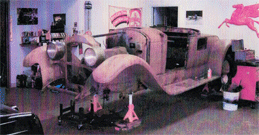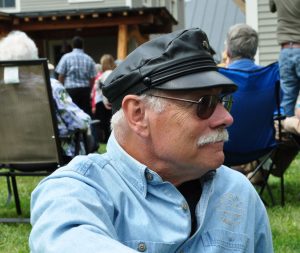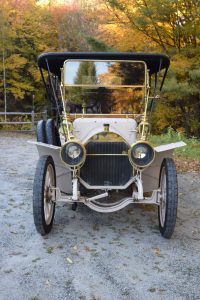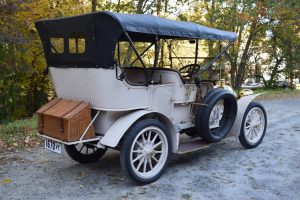with its first 28 years still shrouded in mystery…
The truck’s known history begins about 1955 when a VAEer found it for sale On North Main Street in St. Albans, Vermont.
 The Roadster Pickup is locally known as an East Fairfield truck, a little village fifteen miles East of Lake Champlain in Northern Vermont. The village is known for saying yes to the railroad. The story goes, when the railroad wanted to build a line through the town in the 1860s the sleepy village center 5 miles West of East Fairfield had hysterics at the idea of becoming a rowdy railroad town. East Fairfield opened its arms to the idea… rowdy and all!
The Roadster Pickup is locally known as an East Fairfield truck, a little village fifteen miles East of Lake Champlain in Northern Vermont. The village is known for saying yes to the railroad. The story goes, when the railroad wanted to build a line through the town in the 1860s the sleepy village center 5 miles West of East Fairfield had hysterics at the idea of becoming a rowdy railroad town. East Fairfield opened its arms to the idea… rowdy and all!
East Fairfield’s nickname is “Puddledock”that came from the Spring time hub-deep mud in the streets and the folks who live there are called “Puddledockers”; terms of endearment used to this day. When the St. Johnsbury and Lake Champlain Railroad came through town the transition was instantaneous. Hotels, granaries, a drug store, bars and pool halls were built overnight. Water power at the two dams on Black Creek sprouted all kinds of new enterprises. Puddledock took on the reputation as a rowdy railroad town while the little town center, just a few miles away, stayed safely away.
The story also goes that the model T spent many of its years, previous to 1955, in Puddledock, in fact the exact residence and driveway has been identified as its home. This information has been passed down from villagers long past away and the home was torn down many years ago. Is the story true, what was the truck used for and who owned it during that time has not been figured out completely, the detective works continues…
The VAEer who found the truck for sale in 1955 is Gael Boardman. The seller who brought it to Walter Benjaman’s garage on North Main Street, St Albans to sell it was unknown when Gael offered $20.00 to buy it. When Gael returned to find if the seller accepted his offer, he found a local hotel owner, Doug Kelly, had bought the truck for $25.00. Wheel Tracks found Mr. Boardman, sixty one years later, still a little upset he got “out-offered” by Mr. Kelly. Gael was prepared to go all the way to $30.00 but in the traditional way of bartering, one does not let that information out until the exact ‘correct’ time.
For many years the Model T was parked in a shed behind the Kelly Hotel on South Main Street until rumor had it that Mr. Kelly sold it to someone in the Boston area.
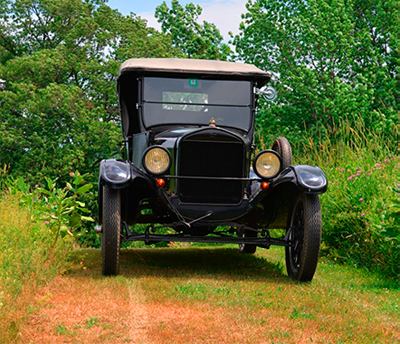 Enter another VAEer… John Lavallee. John’s dad and grandfather had a machine shop in Massachusetts and had decided to expand into Northern Vermont in the mid 1960s. John was a young man when he joined his father and grandfather in Winooski to inspect the building they had just purchased along the river and that is when he spotted a Model T pickup in one of the dark corners of the building. The truck then had a new owner, John Lavallee. A short time later, John heard a rumor the “T†had belonged to Mr. Kelly and after telling John it was impossible that the truck had been his, Mr. Kelly recognized the repair work he had done on the rear of the vehicle. The Model T was in fact the Kelly/ East Fairfield truck. Over the 20 to 22 years that John owned the truck, not a whole lot was done to it.
Enter another VAEer… John Lavallee. John’s dad and grandfather had a machine shop in Massachusetts and had decided to expand into Northern Vermont in the mid 1960s. John was a young man when he joined his father and grandfather in Winooski to inspect the building they had just purchased along the river and that is when he spotted a Model T pickup in one of the dark corners of the building. The truck then had a new owner, John Lavallee. A short time later, John heard a rumor the “T†had belonged to Mr. Kelly and after telling John it was impossible that the truck had been his, Mr. Kelly recognized the repair work he had done on the rear of the vehicle. The Model T was in fact the Kelly/ East Fairfield truck. Over the 20 to 22 years that John owned the truck, not a whole lot was done to it.
The Model T caught the eye of a dairy farmer in 1987 and again it found a new home, but this home was special… it was back in East Fairfield!
Dennis Dodd belonged to the VAE and his farm is a mile or two just outside the village. Over the 29 years the Model T hardly ever missed an area parade. Dennis and Linda’s children along with many other local kids spent many great times throwing candy to parade spectators from the pickup’s bed.
The “T” also had quite a transformation on Dennis’ farm. It got a Ruxtal rear-end and Rocky Mountain brakes. A new top and bed, a complete motor job and all the running gear trimmings along with a new coat of paint. Dennis told about the memorable hours he and his son drove the back roads enjoying the country side. He spoke of all the sights you can see when going 20MPH. He would just pop the Ruxtal into gear and chug along not having to shift, no mater how steep the hills.
So, now it is 2016 and Dennis has his attention on a 1908 International high Wheeler project. He also has a ’31 Model A sedan and a really cool home-built Model A Speedster… and the Model T pickup has caught the eye of another VAEer!
Enter the Wheel Tracks editor… The Ruxtal rear-end and Rocky Mtn. brakes was more than the guy could resist, the truck, again, has a new home. The good news is the 1927 model T pickup is only a few miles North of its East Fairfield beginnings. The bad news is the amount of filled space that had to be freed-up to make room for the “T”. All good, when you step back and look at the scheme of things…










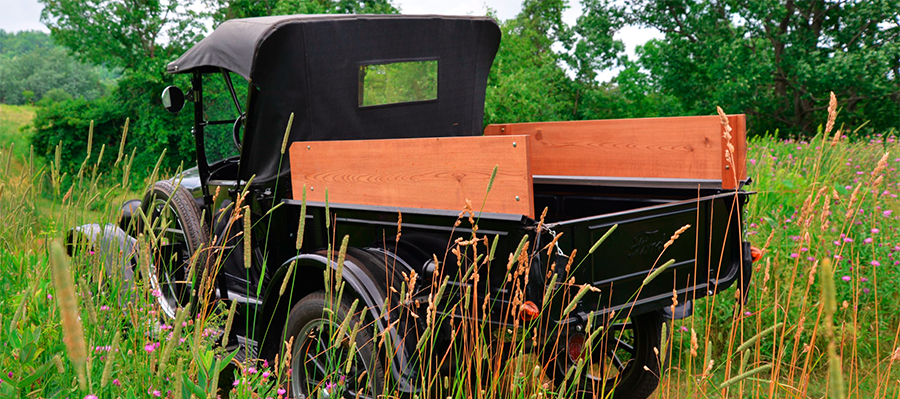
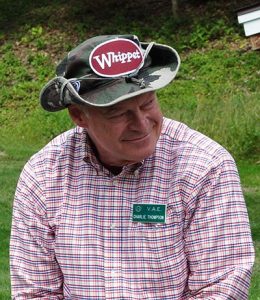 Way back in ’67, my friend Dick, who was driving a ’31 Willys as his regular car, told me about a ’29 or ’30 Whippet for sale in Charlotte, VT.
Way back in ’67, my friend Dick, who was driving a ’31 Willys as his regular car, told me about a ’29 or ’30 Whippet for sale in Charlotte, VT.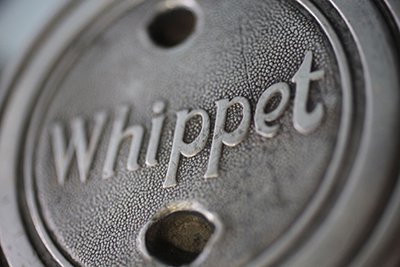 The Whippet was pretty much complete, but had had a rough life. It had been wrecked a couple times and had dents and rust with running boards replaced with old rough lumber. The top had been improperly replaced and water had rotted most of the wood around the top and door posts. Water and mice had totally destroyed the rear seat. But…with a little gas in the vacuum tank and a push around the yard with my brother’s car, it RAN! It burned oil like crazy, but ran all the same.
The Whippet was pretty much complete, but had had a rough life. It had been wrecked a couple times and had dents and rust with running boards replaced with old rough lumber. The top had been improperly replaced and water had rotted most of the wood around the top and door posts. Water and mice had totally destroyed the rear seat. But…with a little gas in the vacuum tank and a push around the yard with my brother’s car, it RAN! It burned oil like crazy, but ran all the same.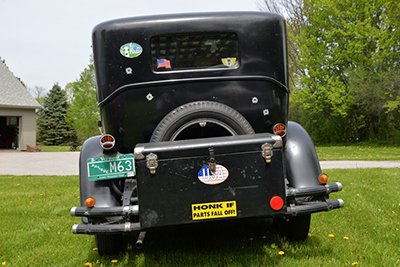 What I remember most on my trips is the friendly and kind people I’ve met along the way. While touring Penns Cave, one tire went flat in the parking lot. By the time I got out of the cave tour, fellow club members had put on the spare. The tube, which I had never removed in 32 years of owning the car, had 4 patches already!
What I remember most on my trips is the friendly and kind people I’ve met along the way. While touring Penns Cave, one tire went flat in the parking lot. By the time I got out of the cave tour, fellow club members had put on the spare. The tube, which I had never removed in 32 years of owning the car, had 4 patches already!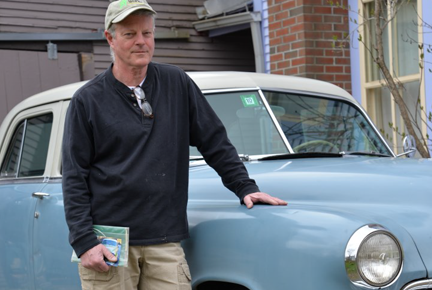 Recklessly, or just poor judgement, we decided to risk driving it home. It first stalled on Route 302 in Barre, backing up traffic for a half mile; then again in Shelburne but we finally did get home. Since then the carburetor was rebuilt by the Carb Doctor and there have been no problems.
Recklessly, or just poor judgement, we decided to risk driving it home. It first stalled on Route 302 in Barre, backing up traffic for a half mile; then again in Shelburne but we finally did get home. Since then the carburetor was rebuilt by the Carb Doctor and there have been no problems.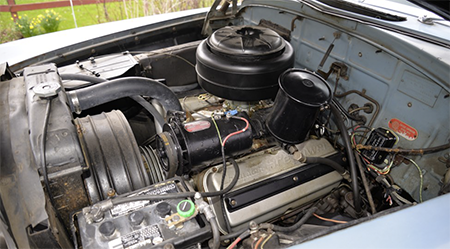 The car has needed a lot of additional work. A complete rewiring, more chrome plating, new tires and mostly correcting a lot of poor workmanship done by others. A new paint job and upholstery is my plan yet to do.
The car has needed a lot of additional work. A complete rewiring, more chrome plating, new tires and mostly correcting a lot of poor workmanship done by others. A new paint job and upholstery is my plan yet to do.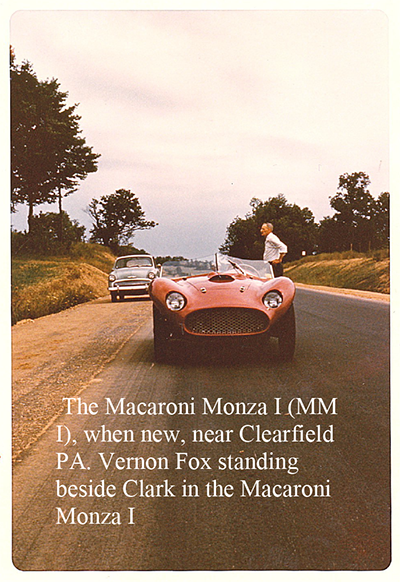 June 1954 – mid-Century in what has been typified by many as the Age of the Automobile – General Motors had just produced its 50 millionth car – Mercedes introduced the 300SL coupe, with its now famous gull-wing doors – Nash and Hudson had merged to form the American Motors Corp (AMC) – the Dow Jones Industrial Average closed at an all time high of 382.74.
June 1954 – mid-Century in what has been typified by many as the Age of the Automobile – General Motors had just produced its 50 millionth car – Mercedes introduced the 300SL coupe, with its now famous gull-wing doors – Nash and Hudson had merged to form the American Motors Corp (AMC) – the Dow Jones Industrial Average closed at an all time high of 382.74.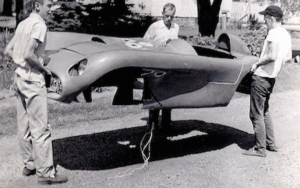
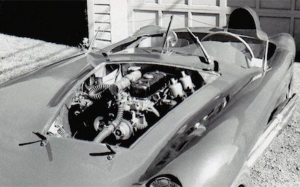

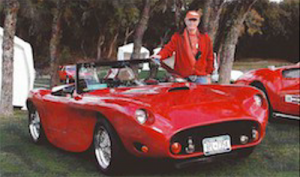
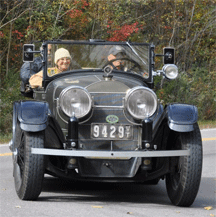 Why a Locomobile?
Why a Locomobile?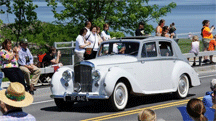
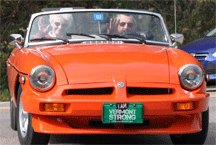

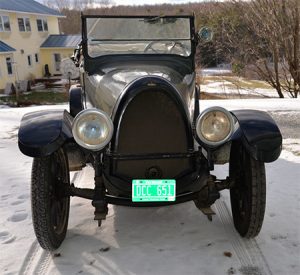
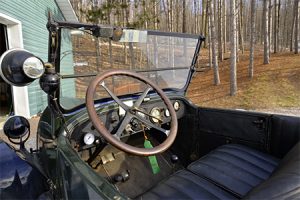 In Rutland, Vermont that year George Lamphere was shopping to buy a new car. He and his wife, Eva, lived at 3 Clarendon Avenue and their creamery & dry goods store on Main Street must have been doing fairly well. There were a number of auto dealerships in the area but the one at 107-109 West Street must have caught their eye because they sold an air cooled car where you didn’t have to worry about the radiator freezing up during the winter. Another thing they might have seen in the car ads was, “you could put the accelerator to the floor, even in the desert, and run it that way all day or until you ran out of gas”. That is how good these engines were. The dealership was named Rutland Machine and Auto Company and they sold Seldon trucks and Franklin Automobiles. The Franklin touring car pictured above is the car the Lampheres decided upon.
In Rutland, Vermont that year George Lamphere was shopping to buy a new car. He and his wife, Eva, lived at 3 Clarendon Avenue and their creamery & dry goods store on Main Street must have been doing fairly well. There were a number of auto dealerships in the area but the one at 107-109 West Street must have caught their eye because they sold an air cooled car where you didn’t have to worry about the radiator freezing up during the winter. Another thing they might have seen in the car ads was, “you could put the accelerator to the floor, even in the desert, and run it that way all day or until you ran out of gas”. That is how good these engines were. The dealership was named Rutland Machine and Auto Company and they sold Seldon trucks and Franklin Automobiles. The Franklin touring car pictured above is the car the Lampheres decided upon.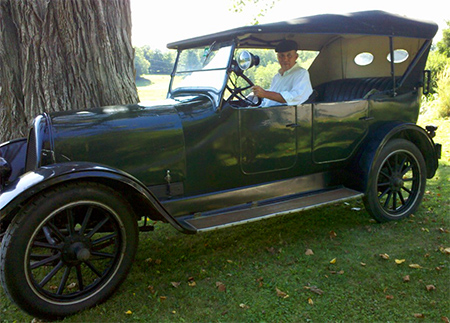 The Franklin Company had sold about 43,000 cars by 1919 and had the process fairly well perfected by then. They were using 6 cylinder engines in 1906 for some of their models and by 1914 all Franklins had six cylinder engines. Managing the air flow was important in these air cooled vehicles and until 1922 all that was required was a fan between the engine and the transmission to help “pull” the air through. As the horse power increased they moved the fan to the front of the engine and continued to use the cylinder fins to force air down past the hot cylinders, this was called a “down-drafter”. As the 6 cylinder engine power grew, from 24 HP to over 100HP, the company changed again in 1930, to keeping the fan in the front but now forcing air “across” the engine thus calling it a side drafter. A much more efficient way to keep the engine cool.
The Franklin Company had sold about 43,000 cars by 1919 and had the process fairly well perfected by then. They were using 6 cylinder engines in 1906 for some of their models and by 1914 all Franklins had six cylinder engines. Managing the air flow was important in these air cooled vehicles and until 1922 all that was required was a fan between the engine and the transmission to help “pull” the air through. As the horse power increased they moved the fan to the front of the engine and continued to use the cylinder fins to force air down past the hot cylinders, this was called a “down-drafter”. As the 6 cylinder engine power grew, from 24 HP to over 100HP, the company changed again in 1930, to keeping the fan in the front but now forcing air “across” the engine thus calling it a side drafter. A much more efficient way to keep the engine cool.